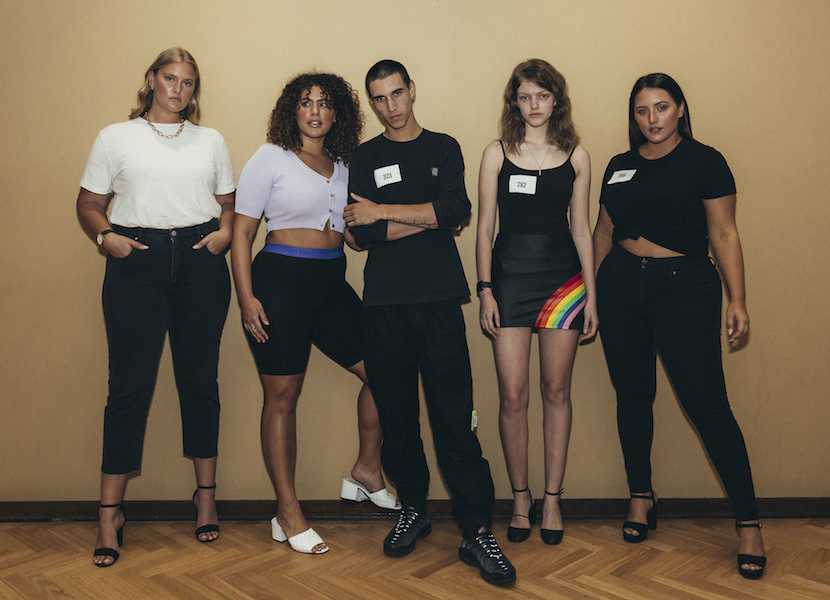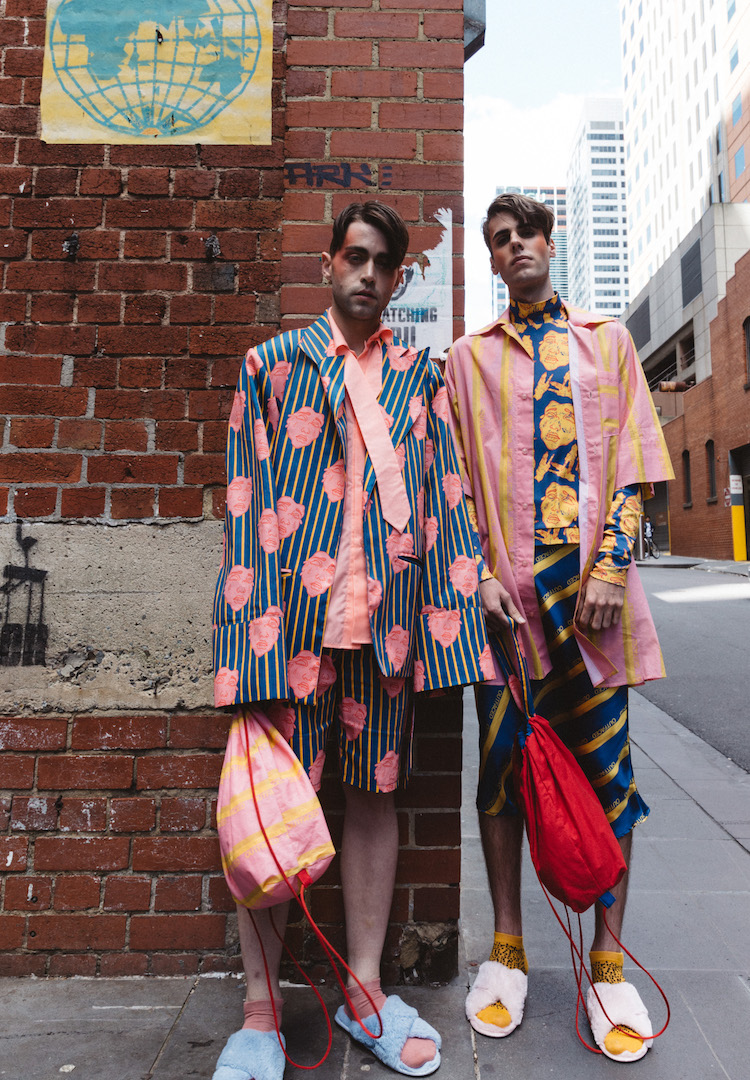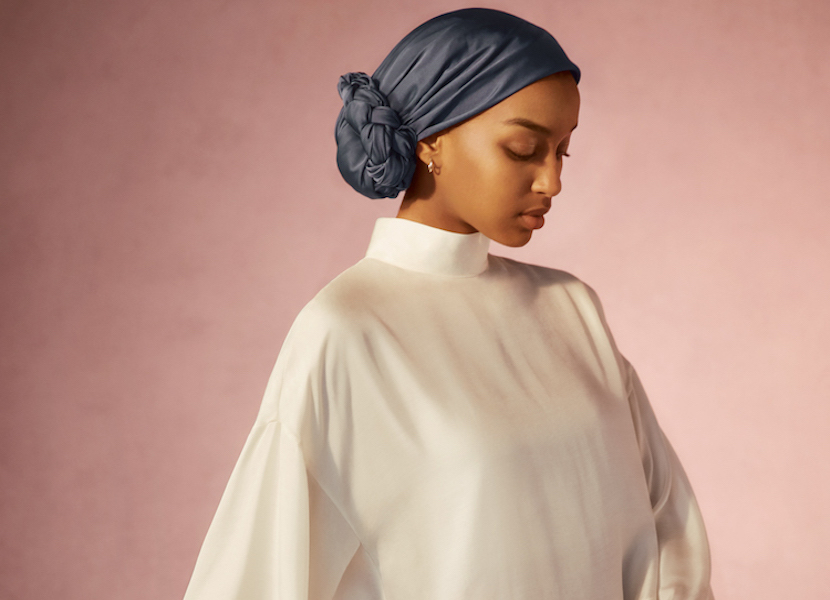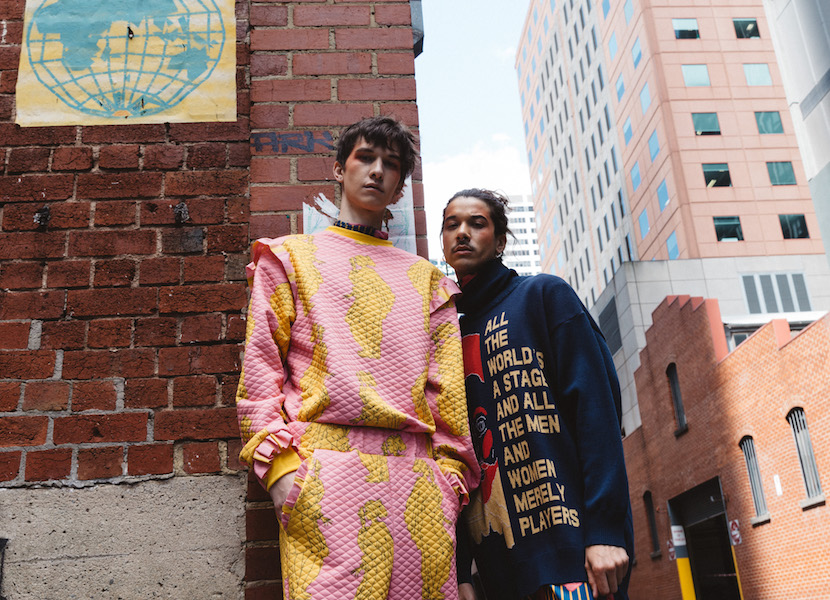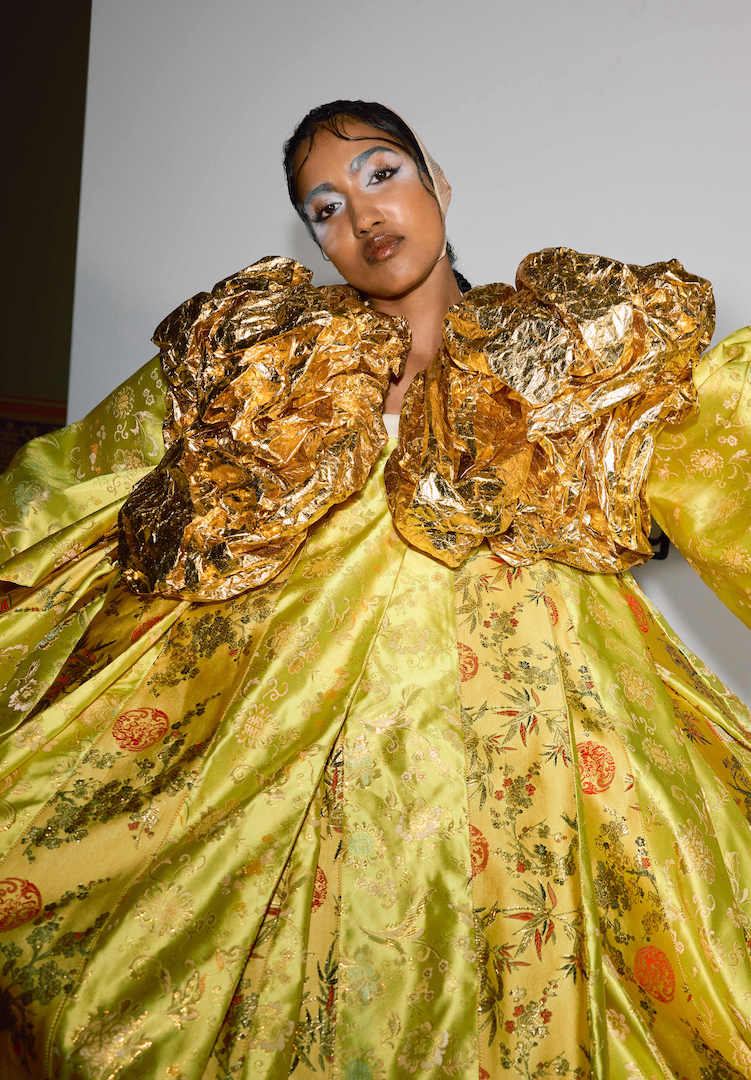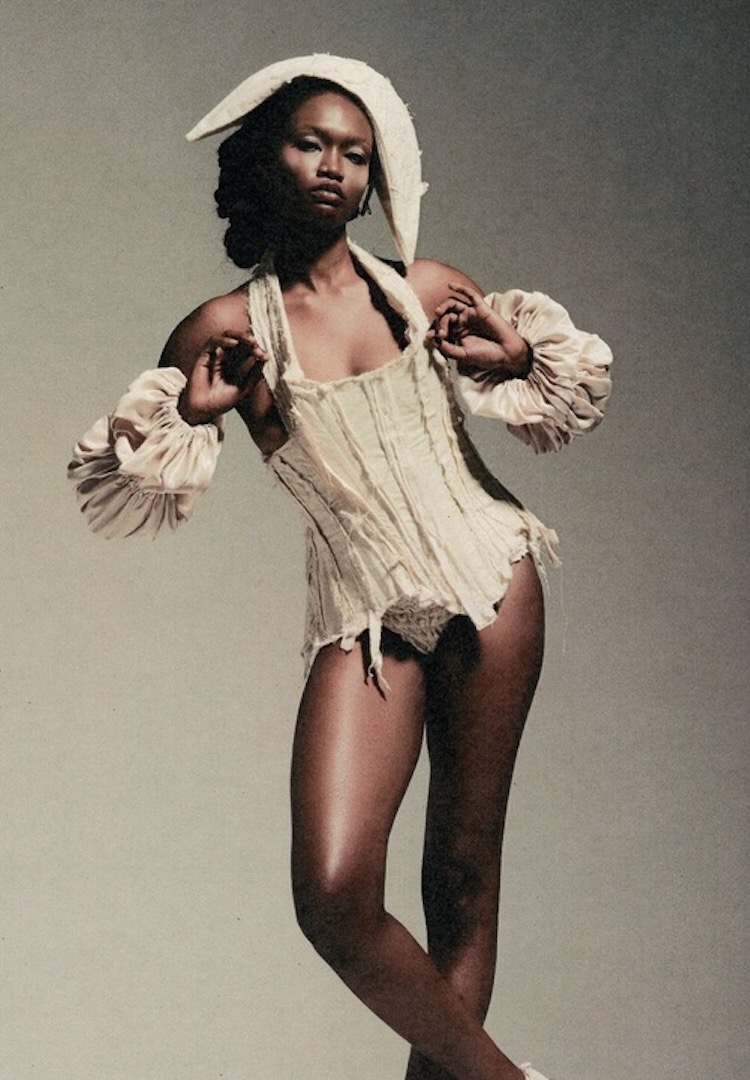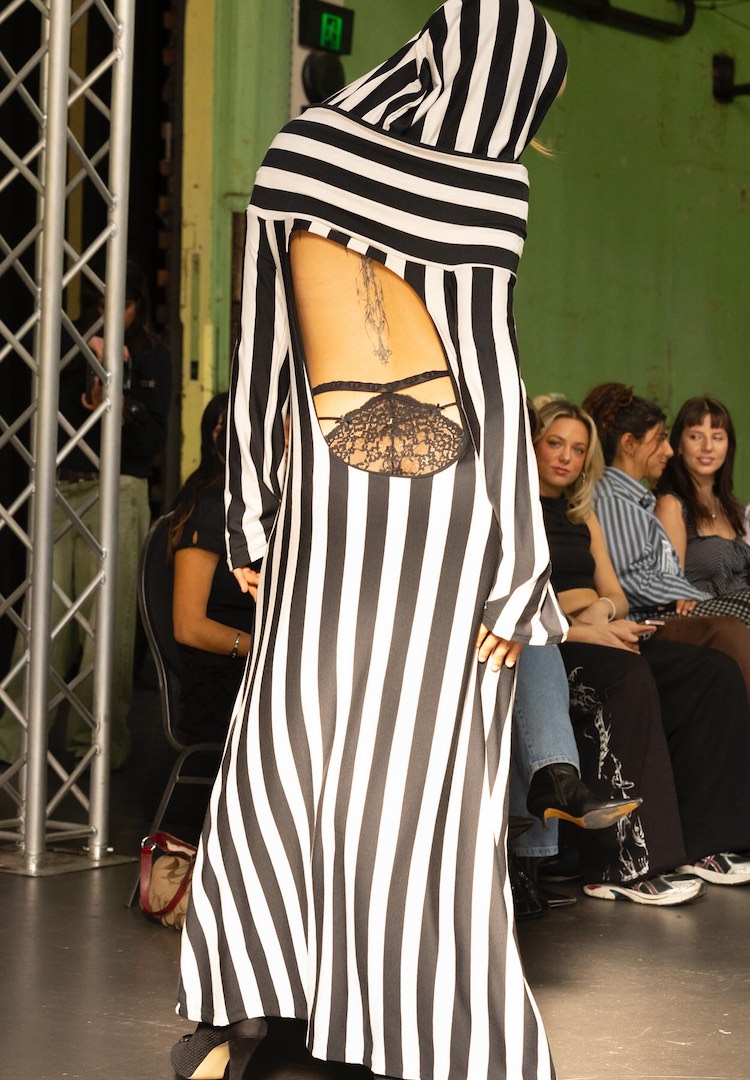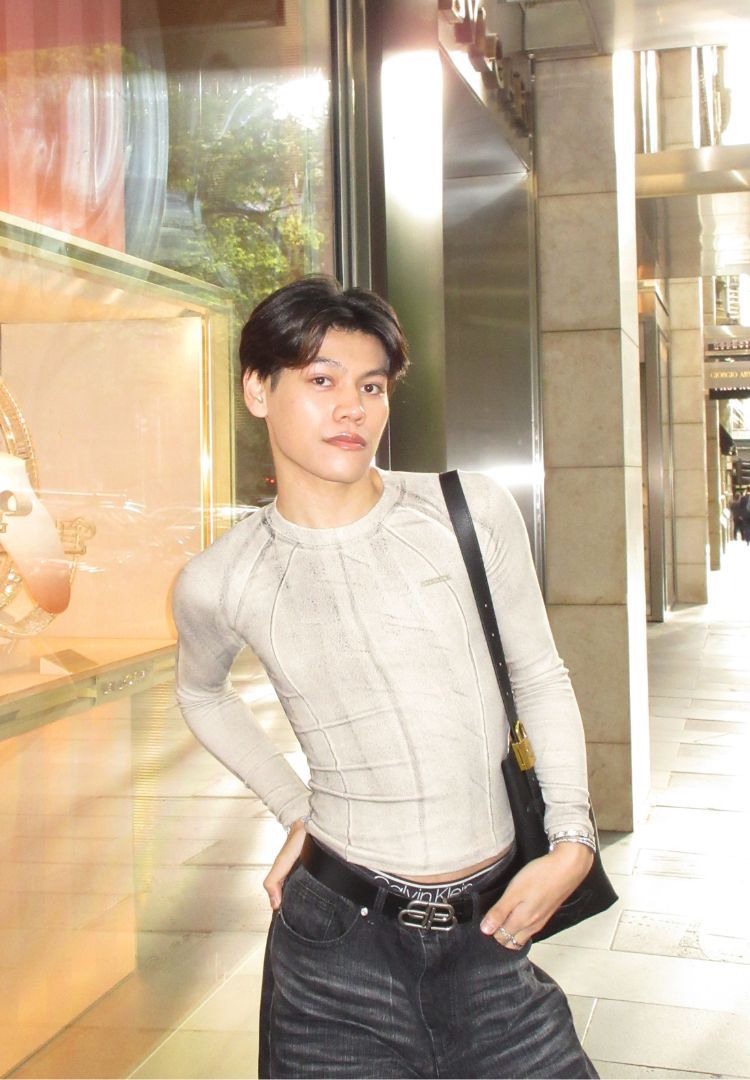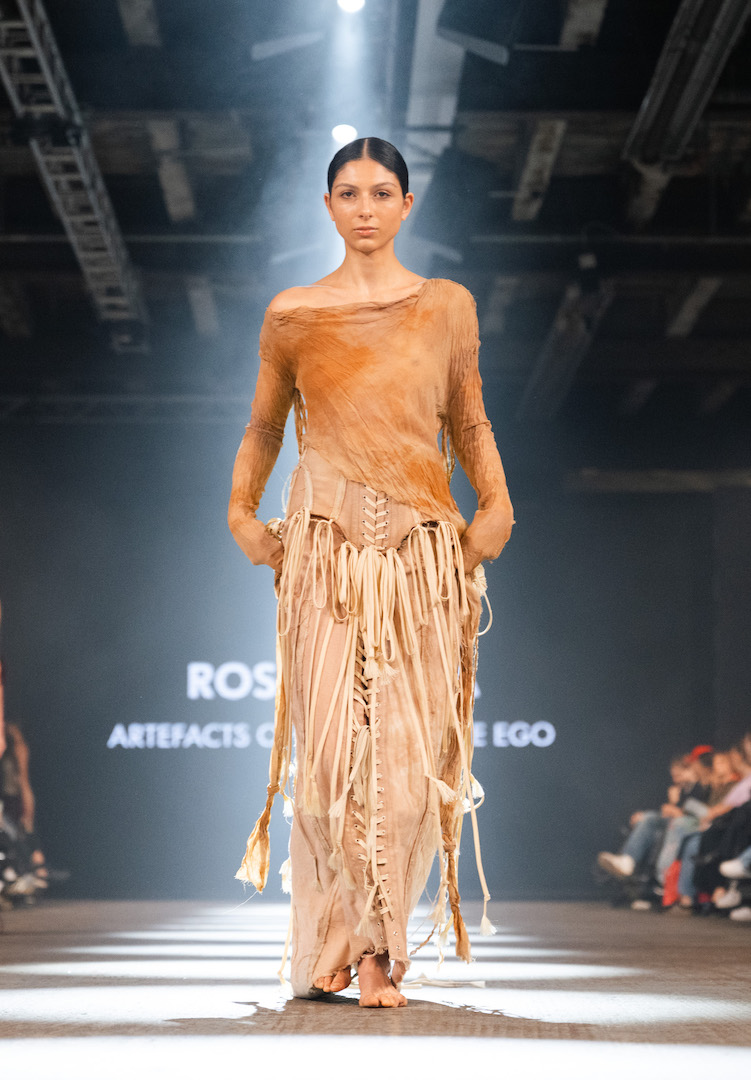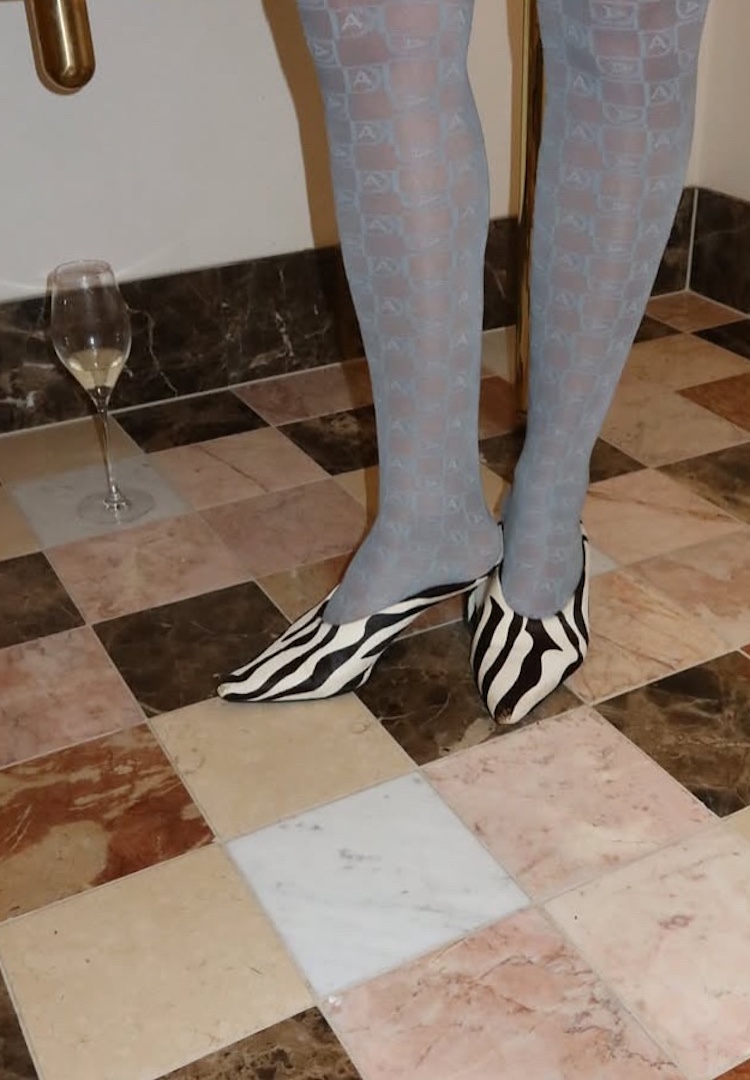Designer Megan Taylor’s graduate collection draws on war propaganda and Greek theatre
PHOTOGRAPHY BY KYLE LEWENDON
Behind the mask.
Once again, Fashion Journal is the supporting partner of Virgin Australia Melbourne Fashion Festival’s National Graduate Showcase.
The 12 finalists for 2020 have been announced, and each designer has given us a behind-the-scenes insight into the collections they’ll be showing on the night.
First up: Megan Taylor with her graduate collection, Outfaced.
Please introduce yourself to our readers.
My name is Megan, and I’m 23 years old. After completing two years of TAFE and one year of university, I graduated in December of last year with a Bachelor of Design (Fashion) from Whitehouse Institute. My first tattoo was a portrait of my childhood pug, over which I have yet to have any regrets.
Tell us about your collection.
Outfaced seeks to meet the growing deconstruction of gendered clothing. Where, historically, labels have tried to approach gender-neutrality through simple, boxy shapes and muted colours, Outfaced approaches this deconstruction through oversaturation.
Throw it all at the wall, and see what sticks – the collection builds on trends rising in American and European markets and cultivates them for Australian tastes, injecting fun and playfulness to meet a demand for levity.
When did you know you wanted to get into fashion design?
I’ve always had a keen interest in a range of creative pursuits, and I revel in the interconnectivity of art, theatre, history and fashion. I took a roundabout way of discovering a love for fashion, approaching it through the avenue of a passion for art and theatre.
When I had that realisation – that I could explore art through such an interesting and historied medium – that’s when I really became excited about fashion design.
How would you describe your design style?
I definitely tell my stories in a very visual, graphic way – if I’m exploring concepts of identity there’s a great big mask printed on the garment. A major focus for me is not only that my pieces are visually exciting, but that they’re also comfortable to wear and there’s room to expel all that energy.
What were the major points of inspiration for your graduate collection?
Concepts of acting and the performance of identity overarch the collection.
Within that is inspiration drawn from the 1940s and 1950s men’s suiting and sleepwear – capitalising on the counterbalance between the two to create interest across silhouette and construction. Shakespeare and war propaganda drove the development of colour and textile design.
What drew you to these references for your imagery?
War propaganda was a big draw for me because of how forcefully it is used to make a statement. Words, shapes and colours work together to create a striking image that utilises fear, hatred and societal expectations to bend the will of the observer. I referenced these bold colour palettes and demanding messages in my print development with the end goal of satirising.
The mask imagery comes from Greek Theatre. It was a train of thought about how fashion functions as a costume – how we curate ourselves and decide how we want to be perceived by others. I reasoned that fashion could be likened to an Ancient Greek Tragedian wearing a mask for a role.
However, the concept of ‘wearing a mask’ is often perceived as ‘pretending to be something you are not’. I wanted to explore the idea of masks and costume in the context of freedom and self-affirmation. This is what lead me to Shakespeare.
Shakespeare’s comedies are playful – he’s flippant with concepts of gender, his characters often juggling multilayered identities. Truth and reality are constantly questioned. Suspension of disbelief is picked at through knowing asides, or shattered with direct addresses.
Tell us about the experience of putting together your graduate show.
Working towards the graduate show was a very fun and rewarding experience. It really instilled in me that styling is just as crucial as the garments themselves. Choosing the right footwear and accessories, whether to button or unbutton a shirt, how to fold, roll and tuck each piece – it all comes together to form something well-considered and curated.
What part does sustainability play in your design practice?
The majority of my fabrics were printed locally in Collingwood at Next State Print. My knitted jumper was made at Interknit in Ballarat. I’ve also incorporated some deadstock fabric into the collection.
What’s next for you?
I’m very lucky to be working as a design assistant at Country Road. I love working as part of a design team. I’ve been learning so much from my colleagues and look forward to continuing to learn and growing my career.
I’m still working on my own print designs almost every week in my downtime, and I get energy from keeping the creative ball rolling. I hope in 10 years to still be drawing, painting, reading and learning for fun.
See more of Megan’s work here.
@outfacedd

